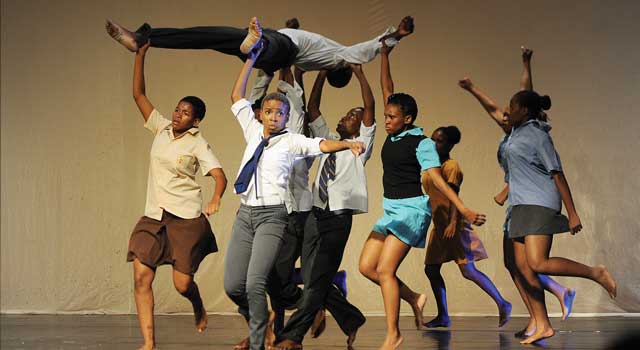In its African context, art can never really serve its greater purpose unless it brings to light critical issues in society. During the past week, as part of the Maitisong Arts Festival, renowned dance group Mophato Dance Theatre magnificently told the story of Segametsi Mogomotsi, a student who was murdered in 1994 in Mochudi in what had all the hallmarks of a ritual murder. The story is one of those tragedies that will always be etched in the minds of many.
The death of Mogomotsi caused chaos not only in Mochudi but the country over. What started as a students’ strike in schools around Mochudi eventually spread to the city of Gaborone and other major towns in the country.
Using images and sounds, Mophato gave a narration of events from Segametsi’s abduction, her murder and the consequent riots. The story is an account of events as witnessed by someone who was a form five student at the time. As a show opener, one of Mophato dancers lay on the floor and slowly assumed the character of Segametsi. With well-crafted and choreographed dance moves, Mophato retold Segametsi’s kidnapping , beating and eventual murder. With no words used, movement was used to narrate the story. The dancers flexed, fell, stretched and crawled to show varying emotions, leaving the audience captivated.
“With this theatre piece, we wanted to share a portion of our history and educate those who were not present at the time of the riots. We decided that before tapping into other people’s stories, it is better we tell our own. I was present during the Segametsi Mogomotsi riots and was still in primary school so I experienced the riots,” said choreographer and Mophato Dance Theatre founder Andrew Kola. Kola explained that he had initially wanted to stage the theatre piece in 2012 but was reluctant due to the sensitivity of the issue. He emphasized that his is merely sharing a part of the history and that he has no intentions of stirring anything political. Quizzed on why they titled the play Inyaya, Kola responded, “Inyaya is a shona word that means issues. We didn’t want to be direct and give away too much before people had a chance to enjoy the play.”
“I know the story very well. In 1994 I was a standard 6 pupil so I remember seeing soldiers and police officers throwing tear gas at large crowds of protesting students. I am now a lawyer so it is also a case I am familiar with and to watch this show, it is surreal. Using only movement, they gave us an image of what might have happened during her kidnapping,” said Tebogo, one of the audience members. Another show attendant, Katlego Monthe said, “the show was really interesting, I just wish it could have been longer. It took about 30 minutes or so and before we knew it, it was done, it was almost like a teaser.”

